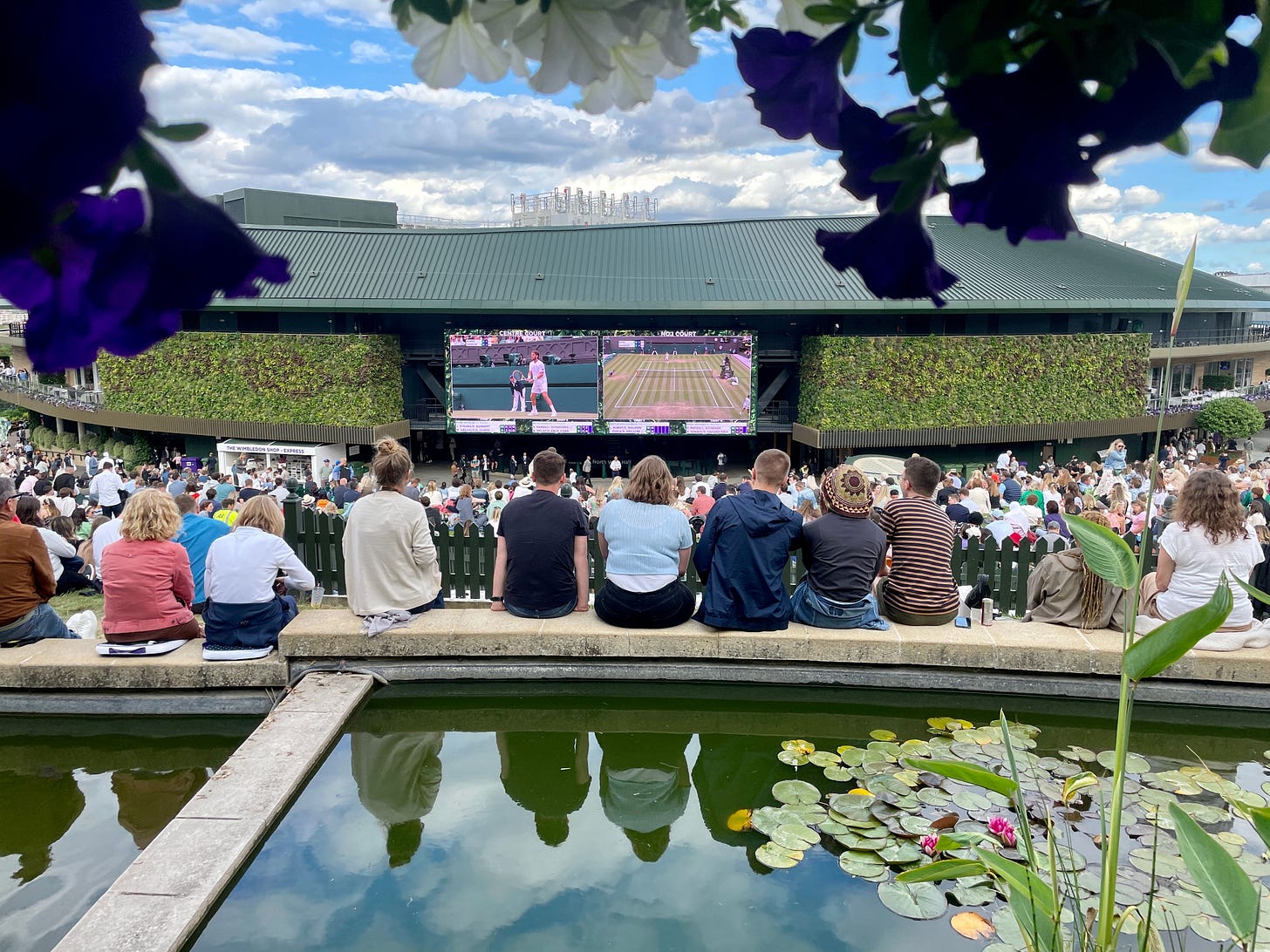‘Ecosystem services’ is a concept sport needs to understand better – and Wimbledon is the perfect case in point
Sustainability strategy and insight for sport
Tennis in an English garden probably felt more like an Arabian desert during the first week at Wimbledon, with temperatures soaring above 32°c. Players and spectators alike were left desperately searching for an elusive breeze and some much-needed shade.
The lush greenery around the iconic tennis venue – so central to Wimbledon’s aesthetic – proved more than decorative. For many braving the queue for tickets, it was a lifeline. Quietly, it highlighted nature’s crucial role in sport as temperatures rise in line with climate projections.
It was fitting, then, that our friends at Sports for Nature (a collaboration between IUCN, IOC, UNEP, the CBD Secretariat and Dona Bertarelli Philanthropy aimed at helping sport lead the way in protecting and restoring nature) hosted a webinar on the importance of nature in urban sport.
Andrew Wayro of the All England Lawn Tennis Club (AELTC) joined to discuss Wimbledon’s achievements and ambitions.
Regular readers will know I often bang the drum about finding ways to measure nature’s true value to sport, something I touched on toward the end of this earlier newsletter.
During the webinar, Wayro, Danielle Doza (Cleveland Cavaliers, NBA) and Nico Briskorn (VfL Wolfsburg, Bundesliga) shared how far they’ve come in understanding the benefits ecosystem services bring to their sports and venues.
Wayro approached it from a risk perspective, revealing that Wimbledon’s aim to be a biodiversity net gain venue is partly driven by climate-related challenges, alongside branding and visual appeal. It may feel intangible, but imagine watching or attending Wimbledon without its flowers, shrubs and greenery – it would be a far lesser spectacle.
In Cleveland, nature conservation also serves as a community engagement tool, with local people involved in planting trees and maintaining nearby green and blue spaces.
Briskorn explained how VfL Wolfsburg used an impact and dependency assessment to create a traffic light system and action plan. It includes measures like planting wildflowers near training grounds, installing bird boxes, creating a vegetable garden for team chefs and improving green space maintenance. Long-term plans aim to embed biodiversity into infrastructure – green roofs, unsealing surfaces, planting native species – with 25 actions targeted for completion by 2030.
Its study also revealed how biodiversity loss indirectly affects the club’s sporting operations. When peatlands dry out, forests are cleared, or habitats disappear, carbon emissions rise and natural carbon sinks weaken, driving climate change. For VfL, this results in worsening weather that disrupts training, matches and event safety.
All of this aligns with the latest resource from Sports for Nature: the ‘Urban Playbook’, which explores why urban nature matters to sport. You can read the full guide here, but below are some of the tangible benefits it outlines:
Cooling: Trees, green roofs and shaded areas can lower temperatures around sports venues by up to 8°C. This helps prevent heat stress, improves athlete performance and creates a better experience for fans, supporting attendance and engagement. Just ask Wimbledon, which saw ticket losses due to a lack of shade in the queueing area.
Flood protection: Green spaces, permeable surfaces and rain gardens absorb excess water, reducing flood risk and waterlogged pitches. This keeps matches on schedule and protects revenue.
Pollution control: Vegetation and soil filter pollutants from air and water, improving health and endurance for athletes while protecting aquatic sports environments.
Aesthetic value: Natural landscaping, flowerbeds and tree-lined walkways enhance visual appeal, boost attendance, elevate brand image and strengthen fan loyalty.
Athlete wellbeing: Nature supports recovery and resilience, helping athletes focus, manage stress and bounce back faster from injuries.
Sustainability: Nature-based design reduces energy and maintenance costs, mitigates climate risks, supports regulatory compliance and builds long-term value.
We’re currently working on a major piece exploring natural capital in sport – digging deeper into how nature supports, sustains and enhances sporting value. We look forward to this gaining traction as more events begin to feel (or miss) both the tangible and intangible benefits of a healthy natural environment.





